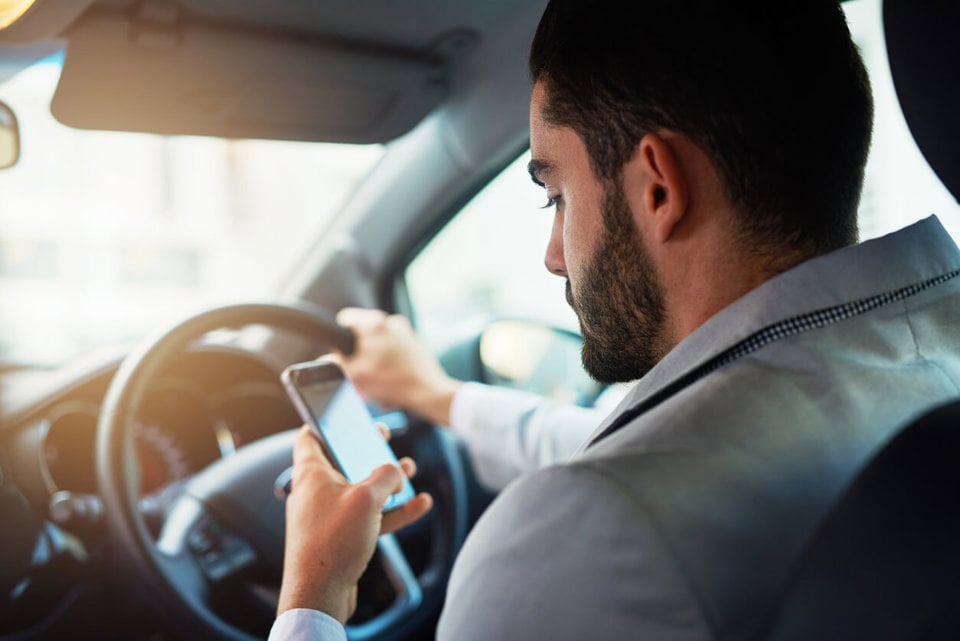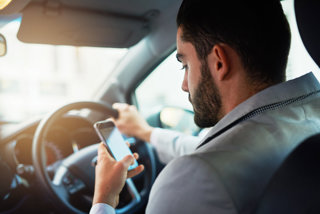New mobile phone laws while driving will come into force from March 25, with research suggesting many drivers are ignorant of the changes.
It had been thought that the new rules, which ban drivers from using their phones to take photos or videos, scroll through playlists or play games, would take effect alongside changes introduce to the Highway Code from Saturday (January 29).
However, the Department for Transport (DfT) has confirmed that the new rules will take effect from March 25, with the necessary legislation now making its way through Parliament.
Edmund King, AA president, said: “This is a much needed upgrade of the law to help make our roads safer.
“Mobile phones offer many distractions and this sends a clear message that picking them up to use them will not be tolerated."
The law will also become tougher as the use of smartwatches, tablets and laptops behind the wheel will apply.
King added: “Drivers will be extremely limited on when they can pick up their phone, mainly to call the emergency services when there was no opportunity to safely pull over and to make contactless payments at drive-thrus.
"Being sat in a traffic jam or waiting at the lights is not an excuse, we want people to keep their hands on the wheel and their eyes on the road.”
The Government announced late last year that it would tighten the rules on the use of mobile phones, making it illegal to use a hand-held device under virtually any circumstance while driving.
It was already illegal to text or make a phone call (other than in an emergency) using a hand-held device while driving.
Anyone caught using their hand-held device while driving will face a £200 fixed penalty notice and six points on their licence.
The Government says that drivers will still be able to continue using a device ‘hands-free’ while driving, such as a sat-nav, if it’s secured in a cradle.
A study by Volkswagen Commercial Vehicles has found that almost half of van drivers are risking a £200 fine and six penalty points on their licence as a result of using a sat nav app on their smartphone.
The research of 1,000 UK van drivers found 46% use an app on their smartphone.
While it is still legal to use sat nav on your mobile phone, it must be safely secured to the dashboard or windscreen, where it must not block your view.
David Hanna, head of sales operations at Volkswagen Commercial Vehicles, said: “We know that van drivers rely on sat navs to get them from one job to the next, but it’s important they do so legally.”
Previous legislation had made it a criminal offence to use a hand-held mobile phone to call or text while driving, but not for other actions such as taking photos.
The law said that an offence is committed if a driver uses a handheld mobile phone for “interactive telecommunication” while behind the wheel.
The phrase reflected how, when the law was written in 2003, smartphones were not in existence and mobile devices were used for sending texts or making calls.
It has enabled lawyers to successfully argue that using a phone’s camera while driving does not constitute “interactive telecommunication”.
It was brought to a head in 2019, when the Director of Public Prosecutions lodged an appeal with the High Court after Ramsey Barreto had a conviction quashed for filming a crash on his mobile phone.
The 51-year-old was prosecuted and found guilty after police saw him driving past an accident using his phone to make a video. However, he had the conviction overturned at Isleworth Crown Court, after his lawyers successfully argued that the law only banned the use of mobile phones to speak or communicate while behind the wheel.
Publishing its decision in July 2019, the High Court dismissed the appeal, agreeing with Barreto’s lawyers.
Drivers concerned over Highway Code changes
Separate research from Venson Automotive Solutions reveals that not all motorists support Highway Code changes, believing they could create more dangerous situations on UK roads, opposed to reducing them.
According to the Venson survey, 79% of motorists disagree with the change that allows cyclists to pass slower-moving or stationary traffic on the right or left, including at the approach to junctions.
Cyclists will be advised they should proceed with caution, especially when deciding whether it is safe to pass lorries or other large vehicles. The question being asked by motorists is “what is deemed safe?”, says Venson.
However, almost half of respondents agree with the new rule which states drivers should remain behind cyclists and motorcyclists at junctions, even if the cyclist is waiting to turn and are positioned close to the kerb.
Changes include requesting drivers to give way to pedestrians crossing or waiting to cross a road into which the driver is turning. This is supported by 44% of survey respondents.
In addition, drivers will have to give way to pedestrians on a zebra crossing, and to pedestrians and cyclists on a parallel crossing.
Pedestrians and cyclists will also be allowed to cross the road in front of slow-moving traffic if the changes are approved.
Alison Bell, marketing director for Venson Automotive Solutions, said: “There is a lot of new information for drivers to take onboard.
“It’s essential that businesses operating a fleet of vehicles have a process in place to allow drivers to familiarise themselves with new changes, as well as brush up on existing rules.
“Businesses and drivers have a duty of care to themselves, other road users and pedestrians. A failure to understand the new rules and correctly implement them could result in financial penalties, law breaking or worse, guilty of an avoidable accident.”























Login to comment
Comments
No comments have been made yet.